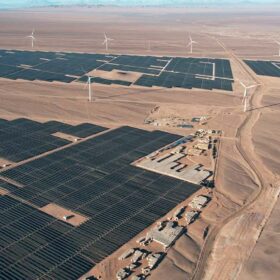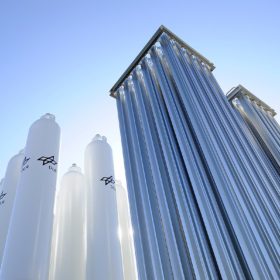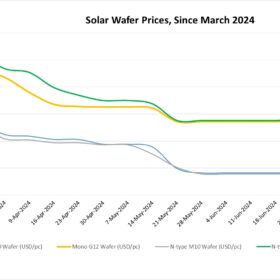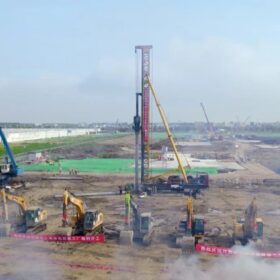Liberia seeks consultants for 20 MW solar project
Liberia Electricity Corporation is searching for consultants to support the construction of a 20 MW solar plant, to be located alongside an existing 88 MW hydropower facility.
Enel Chile begins commercial operation of its largest hybrid project in the country
The PFV Las Salinas stages 1, 2 and 3, which totals 205 MW, will operate jointly with the 112 MW Sierra Gorda Este wind farm and will be the largest industrial-scale hybrid renewable generation center in the country, according to Enel.
India allocates 630 MW of renewables-plus-storage capacity at average price of $0.059 /kWh
The winning developers will set up renewable energy projects backed with energy storage system to supply a cumulative 630 MW of firm and dispatchable renewable power in a demand-following manner.
Spanish researchers develop materials to obtain hydrogen from water via microwave radiation
The developed process allows green hydrogen to be obtained from renewable electrical energy due to the design and use of materials that have redox properties and that respond to microwave radiation.
Wafer prices near bottom, size evolution and capacity globalization continue
In a new weekly update for pv magazine, OPIS, a Dow Jones company, provides a quick look at the main price trends in the global PV industry.
Fraunhofer IEG building new sector coupling test facility to increase electrolyzer, heat pump efficiencies
The city of Zittau has now granted the building permit for the test facility, which is to be constructed by the beginning of next year. The aim is to develop cost-effective electrolyzers for the production of green hydrogen, in which the by-products oxygen and heat can be optimally used.
Researchers find agrivoltaics have LCOE of $0.039/kWh, 7-year payback time in India
Indian researchers have compared the performance of an agrivoltaic system to monofacial and bifacial rooftop PV systems, and have found that the agrivoltaics setup had a shorter payback time and lower levelized cost of energy. Their analysis of performance considered panel temperature, power output, land equivalent ratio, and reliability.
Tesla continues scaling up energy storage business in China
The announcement of Tesla’s battery factory in Shanghai marked the company’s entry into the Chinese market. Amy Zhang, analyst at InfoLink Consulting, looks at what this move could bring for the US battery storage maker and the broader Chinese market.
Poland launches tender for 263 MW/900 MWh battery storage system
Polish utility PGE Group has launched a tender for the design and construction of a battery storage facility with a minimum capacity of at least 900 MWh. Meanwhile, Ukraine’s DTEK has completed the acqusition of a 532 MWh battery storage project in southern Poland.
Safe, long-cyclable lithium metal battery for high temperatures
A research team at the University of Hong Kong (HKU) has developed a new generation of lithium metal batteries, representing a significant advancement in the field. The innovation centers on microcrack-free polymer electrolytes, which promise extended lifespan and enhanced safety at temperatures as high as 100 degrees Celsius.










